Dealing with CF card not reading can be super frustrating, right? These handy little storage devices are a lifesaver for photographers and gadget lovers alike. But sometimes, they decide to give us a hard time. Whether it's a Lexar CF card not reading or a general CF card not recognized by the computer, the struggle is real.
We've all been there – you plug in your CF card, ready to view your precious photos or important files, and... nothing. The computer just won't recognize it. But don't worry!
This article is here to help you out. We're going to walk you through some easy fixes to get your CF card back in working order. We'll also cover what a CF card is, why it might not be reading, and how to prevent these issues in the future.
Try Recoverit to Recover Lost Data from CF Card
Security Verified. Over 7,302,189 people have downloaded it.
In this article
Part 1: What is a CF Card?
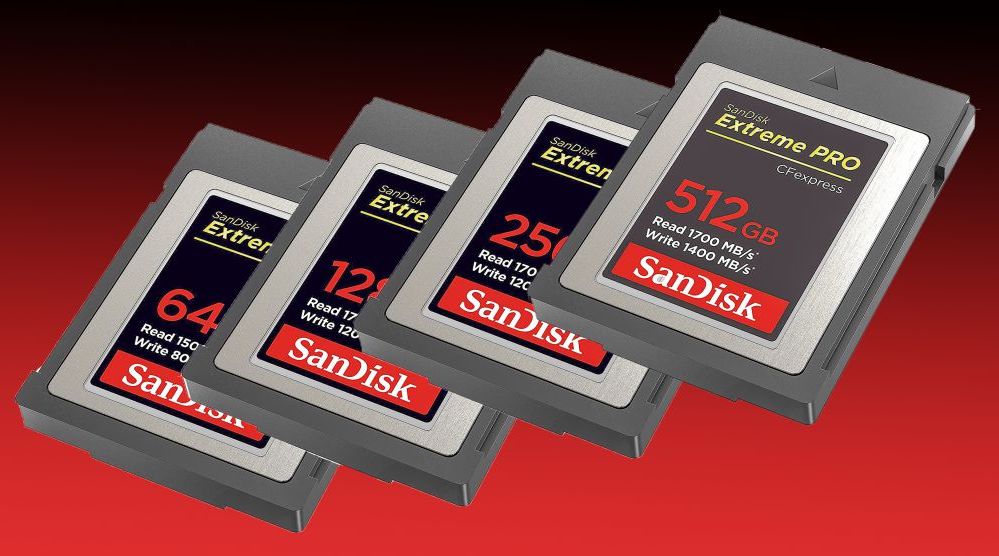
A Compact Flash (CF) card is a type of storage device. It is often used in digital cameras. These cards are known for their speed and large storage capacity.
CFast cards are an advanced type of CF card. They are faster but can also face issues. Understanding what a CF card is helps in troubleshooting. Knowing the basics can help you fix the problems quickly.
Part 2: CF Card Not Reading? Here's Why!
When your CF card is not reading, it can be both confusing and frustrating. Knowing the possible reasons behind this issue is the first step to resolving it. There are several factors that can cause a CF card to not be recognized or fail to read.
By understanding these causes, you can effectively troubleshoot and fix the problem. Let's explore the common reasons why your CF card may not be reading.
- Dirty or Damaged CF Card: Dust or damage can cause CF cards to not read.
- Bad Connection: A loose connection can make a CF card not recognized.
- Corrupted Files: Corrupted data can prevent reading.
- Incompatible Card Reader: Not all readers support all CF cards.
- Faulty CF Card: The card itself might be faulty.
- Physical Damage: Physical issues can cause CF card data recovery needs.
- File System Errors: Errors in the file system can lead to CF card cannot read issues.
Part 3: How to Fix the CF Card Won't Read Issue
Experiencing issues with your CF card not reading can be a hassle, but don't worry.
Before attempting any fixes, it's important to understand that recovering your data is crucial. In this section, we will guide you through step-by-step solutions to get your CF card back in working order. Let's get started.
Method 1: Recover Data First with Recoverit
Data loss can be devastating, so ensuring you have all your files safe is a priority. Recoverit is a powerful tool designed for CF card data recovery. It is user-friendly and effective in recovering files from a CF card.
Using Recoverit ensures that your valuable data is safe before you proceed with any other troubleshooting steps.
Recovering data with Recoverit is straightforward. Whether your CF card is corrupted, not recognized, or not reading, Recoverit can help. Here's how to use Recoverit to recover data from your CF card:
- Click the download link above to download Recoverit. Install Recoverit on your computer. Open the software. Select External Devices Recovery. Make sure the CF card is connected to PC.
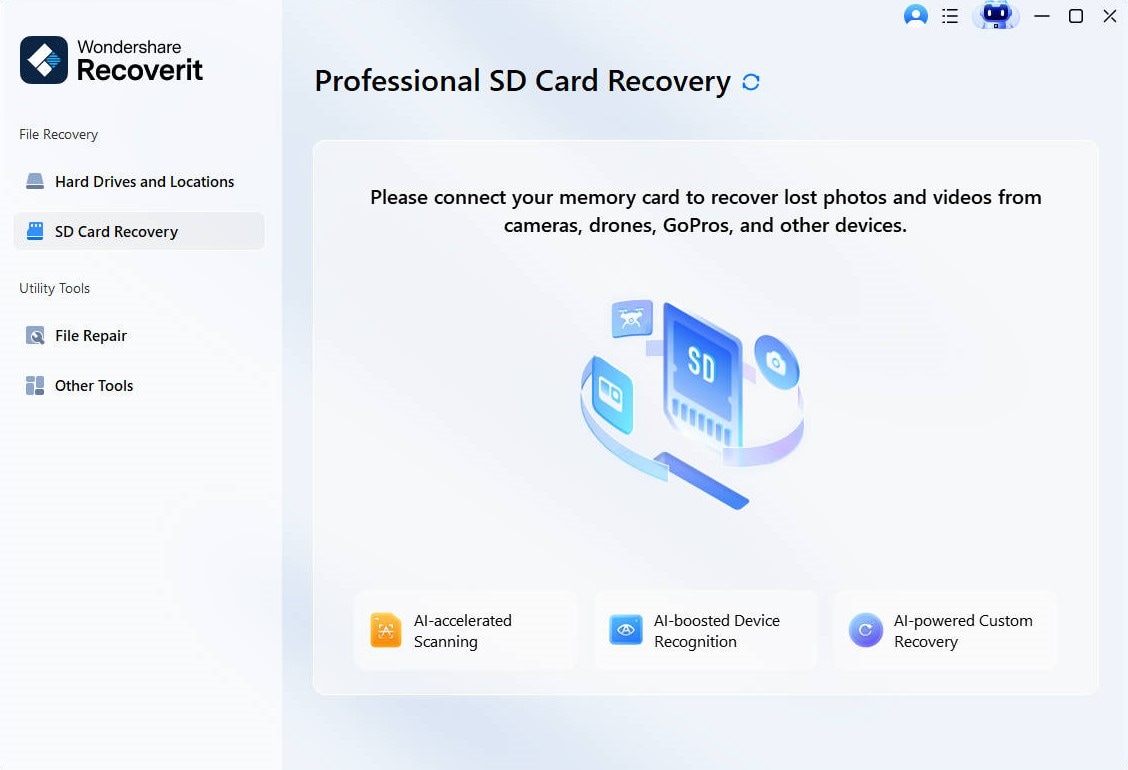
- Click Scan to begin the scanning process.
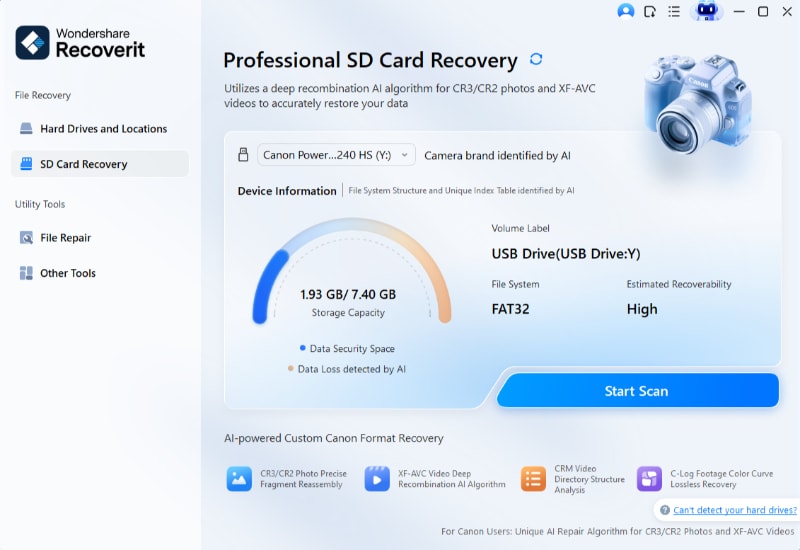
- Recoverit will scan your CF card for lost or deleted files.
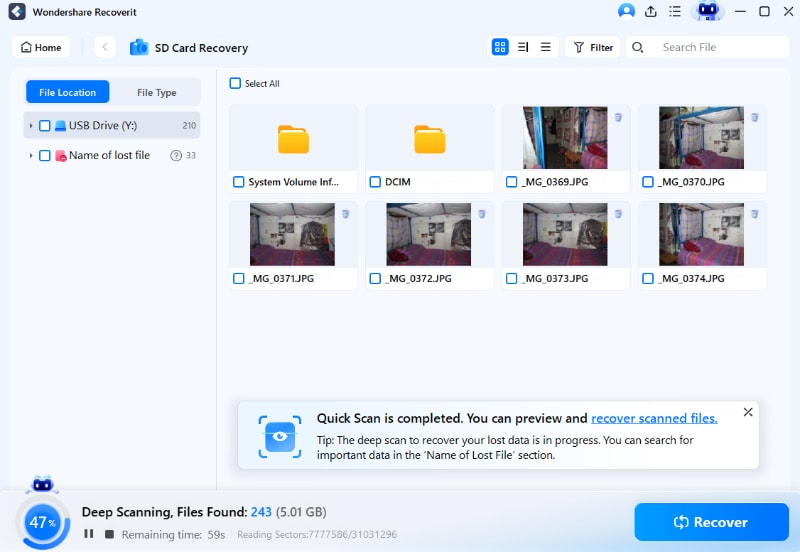
- Choose all the files you want to recover. Click Recover. Save them to your computer, not the CF card. This prevents overwriting.
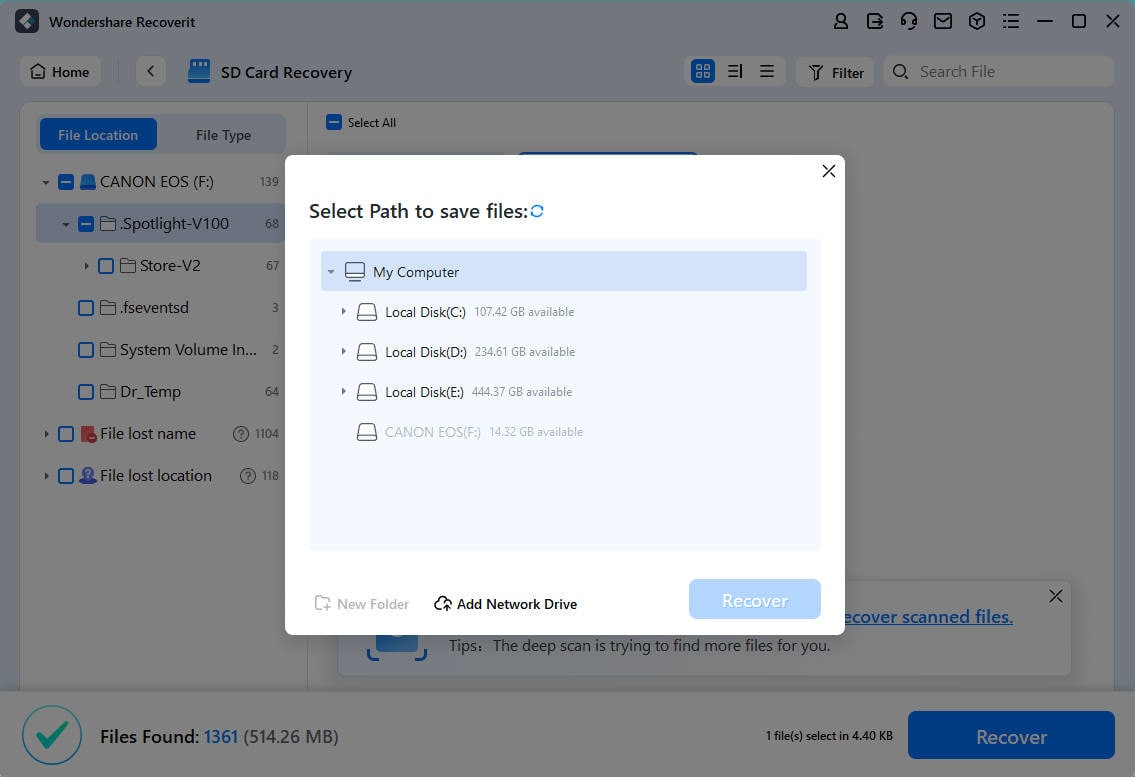
By following these steps, you can ensure that your data is safe before attempting any further troubleshooting methods.
Video tutorial: How to Fix CF Card Cannot Read Error?
Method 2: Re-insert the CF Card
Sometimes, the simplest solution is the most effective. Inserting the CF card again often fixes the problem.
This method works because it can reset the connection between the card and the reader. Here are the steps:
- Carefully remove the CF card from your device or reader. Wait for a moment. This pause can help reset the connection.

- Now connect the CF card back into the device or card reader.
By following these steps, you can often solve the issue of the CF card not reading. This simple method can refresh the connection and make the CF card recognized by your computer or device again.
Method 3: Switch to a Different Card Reader or USB Port
Sometimes, the card reader or USB port you are using might be the issue. Switching to a different card reader or USB port can help. Here are the steps:
- Carefully eject the CF card from your current card reader or USB port.

- Put the CF card into the new card reader. If you don't have another card reader, use a different USB port on your computer. Ensure that the card is properly positioned and the connection is secure.
Switching card readers or USB ports can often resolve the issue. If the CF card is still not recognized, it might be a problem with the card itself or a deeper issue with your computer's hardware or software.
Method 4: Enable Device via Device Manager
If your CF card is not recognized by your computer, it may be disabled in Device Manager. Enabling the device can fix this issue. Here are the steps to enable your CF card via Device Manager:
- Press Windows + X and select Device Manager from the menu. Look under the Disk Drives or Portable Devices section.

- Right-click on your CF card from the list. If the device is disabled, you will see an Enable option. Click on it to enable the device. Ensure that your CF card is now recognized by your computer.
By enabling the device in Device Manager, you can resolve the issue of the CF card not being recognized. This method can help if the device was accidentally disabled or if there was a software issue causing the problem.
Method 5: Change/Assign the Drive Letter
Sometimes, the issue with your CF card not being recognized can be due to a conflict with the drive letter. Changing or assigning a new drive letter can help. Here are the steps to do this:
- Press Windows + X and select Disk Management from the menu. Locate your CF card in the list of drives. Right-click on the CF card drive. Select Change Drive Letter and Paths. In the dialog box that appears, click the Change button.

- Choose a new drive letter from the dropdown menu. Make sure it is not already in use. Confirm your selection and click OK to apply the changes.

By changing or assigning a new drive letter, you can resolve conflicts that prevent your CF card from being recognized. This method can help make your CF card accessible again.
Method 6: Update the CF Card Driver
Outdated drivers can cause your CF card to not be recognized. Updating the CF card driver can resolve this issue. Here are the steps to update your CF card driver:
- Press Windows + X and select Device Manager from the menu. Look under the Disk Drives or Portable Devices section. Right-click on your CF card from the list. Click on the Update Driver option.

- Choose Search Automatically for Updated Driver Software. If Windows finds a new driver, follow the on-screen instructions to install it. After updating the driver, restart your computer to apply the changes.
Updating the CF card driver can ensure that your CF card is recognized by your computer. This method helps to fix any issues caused by outdated or corrupted drivers.
Part 4: Tips to Avoid the CF Card Not-Recognized Problem
Preventing issues with your CF card is better than having to fix them. Here are some tips to help you avoid the CF card not-recognized problem. These tips will keep your CF card in good working condition.
- Handle with Care: Always handle your CF card carefully. Avoid bending or dropping it. Physical damage can lead to CF card not reading issues. Be gentle when inserting and removing the card.
- Use Quality Readers: Make sure you use high-quality and compatible card readers. Not all card readers support all types of CF cards. Using a compatible reader can prevent connection issues.
- Regularly Update Drivers: Keep your device drivers up to date. Outdated drivers can cause recognition problems. Check for updates regularly to ensure compatibility.
- Safely Eject: Always safely eject your CF card from your computer or device. Improper ejection can cause data corruption. Use the eject option to avoid sudden removal.
- Backup Data: Regularly back up your data. This is crucial to prevent data loss. If something goes wrong, you can restore your data from the backup. A cloned bootable compact flash card acts as a trustworthy backup, ensuring minimal disruption if the original card fails or becomes corrupted.
- Clean the Card and Reader: Keep both the card and reader clean. Dust and dirt can interfere with the connection. Use a dry, lint-free cloth to clean the metal contacts.
By following these tips, you can prevent most CF card not-recognized problems. Keeping your CF card and related devices in good condition will ensure smooth operation.
Conclusion
Fixing CF card not reading can be simple. Follow these steps to troubleshoot and fix the issue. From using quality readers to updating drivers, each step can help. Recovering data with tools like Recoverit is crucial. Always handle your CF card with care to prevent issues.
CF card recovery is possible. Whether it's a Lexar CF card not reading or a general CF card not recognized, follow our tips. With patience and care, you can fix the problem. Remember, regular backups can save you from data loss.
Try Recoverit to Perform Data Recovery
Security Verified. Over 7,302,189 people have downloaded it.
FAQ
-
Why is my CF card not reading?
Your CF card might not be reading due to several reasons. Dirty contacts are a common cause. A faulty card reader can also be the problem. Sometimes, files on the card get corrupted. Check if your card reader supports your CF card type. Physical damage to the card can prevent it from reading. Outdated drivers may also cause issues. Make sure your CF card is properly inserted. -
How can I recover data from a CF card?
You can recover data from a CF card using recovery software. Recoverit is a popular option. Download and install the software on your computer. Connect your CF card using a card reader. Open the software and select the recovery option. Scan your CF card for lost files. Preview and select the files you want to recover. Save the recovered files to your computer. -
What should I do if my CF card is not recognized by my computer?
If your CF card is not recognized by your computer, try re-inserting it. Switch to a different card reader or USB port. Make sure the card is properly inserted. Enable the device via Device Manager. Check if the driver needs updating. Change or assign a new drive letter. Clean the metal contacts of the card. Following these steps can help your computer recognize the CF card again.


 ChatGPT
ChatGPT
 Perplexity
Perplexity
 Google AI Mode
Google AI Mode
 Grok
Grok























